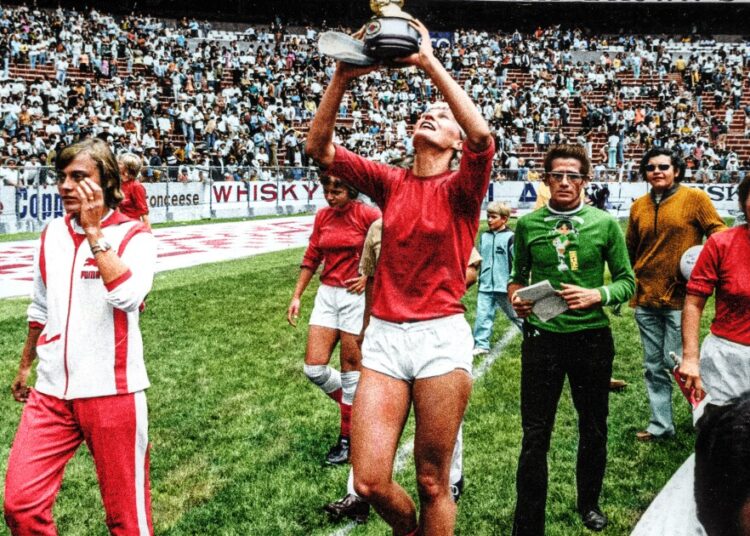At the start of Copa 71, filmmakers James Erskine and Rachel Ramsay confront American soccer legend Brandi Chastain with the question, “When was the first world cup competition in women’s soccer?” Chastain said 1991, and appears flummoxed when they show her footage from a packed stadium in Mexico in 1971 as Denmark defeated Mexico in the actual first women’s world cup tournament.
“Why didn’t I know about this?” Chastain said in the film. “It makes me very happy — and quite infuriated, to be honest with you. I mean, I’m almost at a loss for words.”
Happy and infuriated is pretty much the overall tone of this enlightening film that also makes you shake your head at the stuffy, intransigent men — and they were all men — whose view of the world did not allow the idea that women might play this game. The movie is a melodrama that takes the audience from the days when women were pointlessly ostracized from soccer and mocked if they wanted to play, to the time of athletes like Brandi Chastain who showed the world fabulous soccer played by women.
The film shows both ups and downs. It turns out women’s soccer — or perhaps we should call it football, like the rest of the world — was popular in the early 1900s. It’s a bit like the history of the movies: There were a number of fine and celebrated women filmmakers up until the mid-1920s, but then the men in control shut them down and froze them out.
Get top headlines and KUNC reporting directly to your mailbox each week when you subscribe to In The NoCo.
The men in charge of soccer got nervous as the women got good. Male doctors claimed the sport was bad for women. For a time, it was literally a crime for women in Italy and Brazil to play the game. The international federation – Fédération Internationale de Football Association (FIFA) – decreed any national soccer federation that allowed women to use their facilities would be penalized.
But after the men’s world cup was played in Mexico in 1970, some Mexican businessmen figured they could make bank on women’s soccer. They got a sponsor, lined up stadiums, and put on the tournament with teams from all over Europe and Latin America. As the film shows, these athletes competed in front of crowds of over 100,000 screaming, delirious fans, both men and women.
Copa 71 mixes film of the 1971 games with interviews with women from Denmark, France, Italy, Argentina and Mexico. Today, many of the women look like ordinary people in late middle-age. But when they talk you realize that they each embody a remarkable history. Of course, Copa 71 is about women’s soccer, but the picture is also a study in aging, memory and how these people have lived with moments of extreme triumph along with equal moments of disappointment and exclusion.

Victor Crawshaw/Mirrorpix
/
Daily Mirror
In Mexico, the players were fussed over and celebrated with extensive newspaper coverage, parties at national embassies, and immense adoring crowds. Afterwards, when they returned home, the women were barely noticed. Nicole Mangas, from the French team, said she was invited as a special guest to speak at a major event, but the man who introduced her took the opportunity to ridicule her. Pictures of FIFA meetings in Geneva over the years say plenty, with rows of gray-haired, self-satisfied men at tables making rules to exclude women from playing football. You have to wonder: What did it do for them to shut down women’s soccer?
Copa 71 also takes a good shot at contemporary ageism. These 70-something women embody precious history. When they talk about the tournament, real fire comes into their eyes. And archival film shows wonderful athletes who were ferociously competitive. They were not dainty, like the stereotypes. They were not timid. They were fierce—and they still are.

















